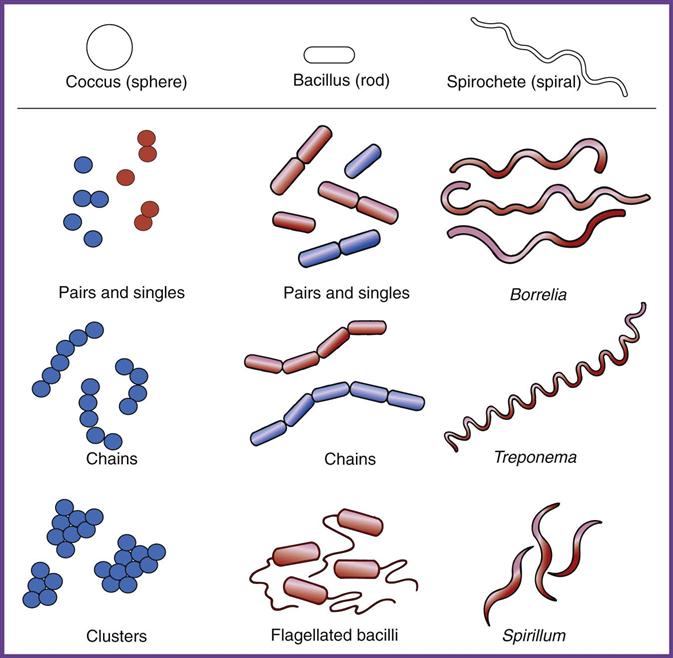
They are able to sense the presence of certain nutrients in their environment and move toward them and they are able to move away from harmful substances. Using flagella, bacteria are able to respond to environmental stimuli. Bacteria can be literally be found everywhere.

#ALL BACTERIA SHAPES SKIN#
They can also be found on our skin and hair. Bacteria can have multiple flagella that surround the cell, a few flagella on one or both ends of the cell, or a single flagella. They are in our stomachs and intestines, and our throats, ears and nose. These structures move in a circular motion to propel the bacteria forward. Bacillus thuringiensis Bacillus megaterium Bacillus alvie Bacillus mesentericus Bacillus larvae See all related content bacillus, (genus Bacillus ), any of a genus of rod-shaped, gram-positive, aerobic or (under some conditions) anaerobic bacteria widely found in soil and water. Some, but not all, bacteria have one or more flagella. Not all bacteria are bad our body is full of helpful bacteria that we need every day and although it is just a single cell, it can carry out all 6 life. Because it has no cell wall it can have a variety of shapes.ģ) flagella –a whip-like structure used for movement. The lecture will: Cover different classification schemes for grouping bacteria, especially the use of the Gram stain Describe the different types of bacteria Discuss bacterial structure and the function of the different bacterial components Discuss the distinguishing characteristics of Gram positive and Gram negative bacteria.

Mycoplasma pneumoniae is an example of a cell wall-less bacteria. They have, instead, chemical compounds which protect the bacteria against drying out and they usually live in environments in which osmotic pressures are not a problem for survival. coli (stained pink).Ī few bacteria do not have cell walls.

The image at the left as seen through a microscope shows both Gram-positive (stained dark purple) rod-shaped bacteria, Bacillus cereus, and the smaller Gram-negative rod-shaped bacteria E.


 0 kommentar(er)
0 kommentar(er)
